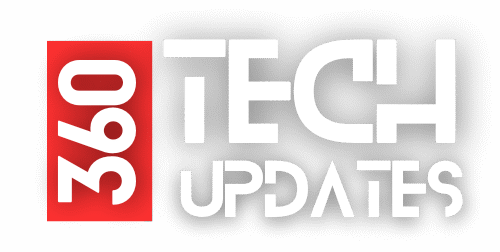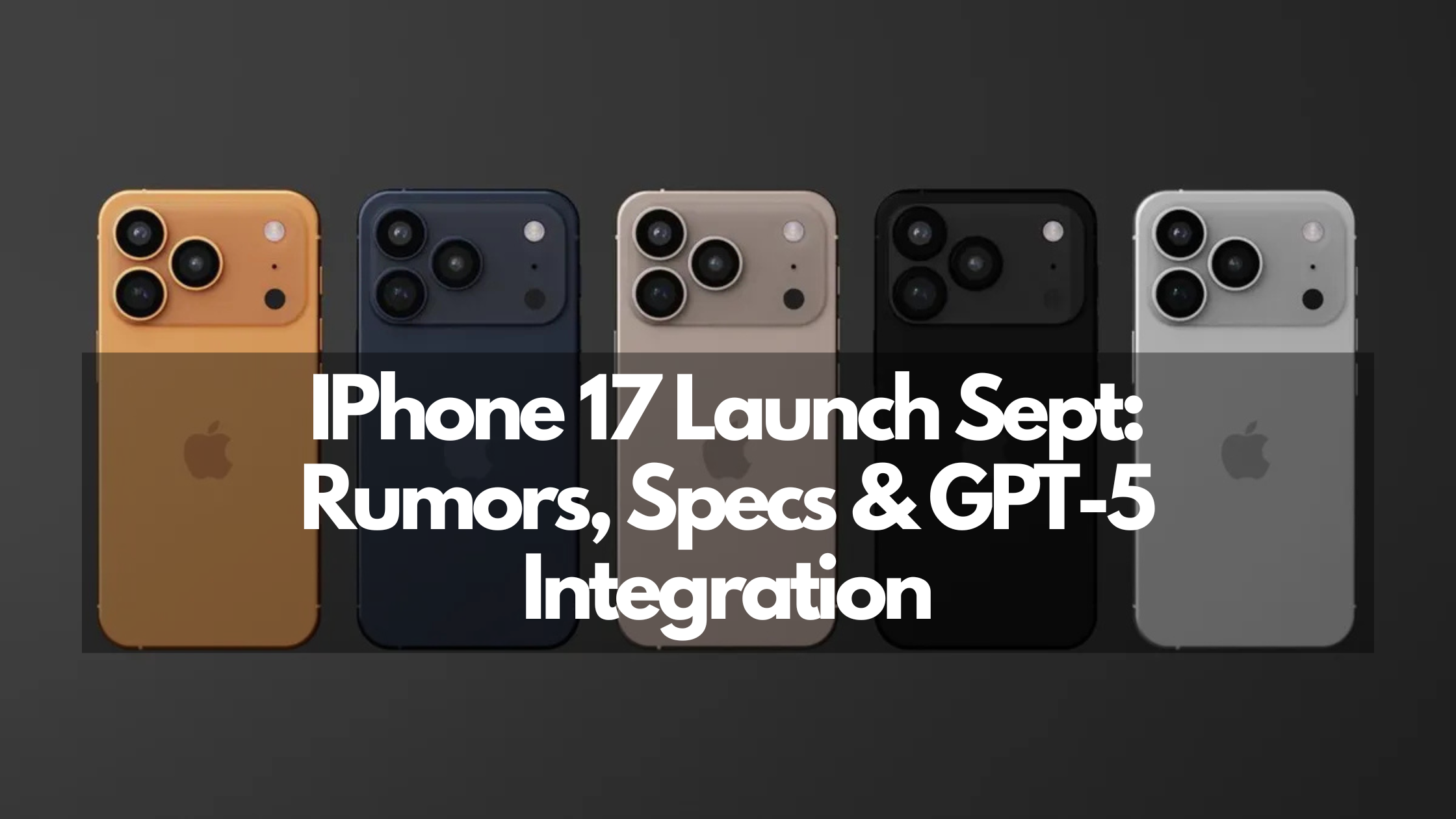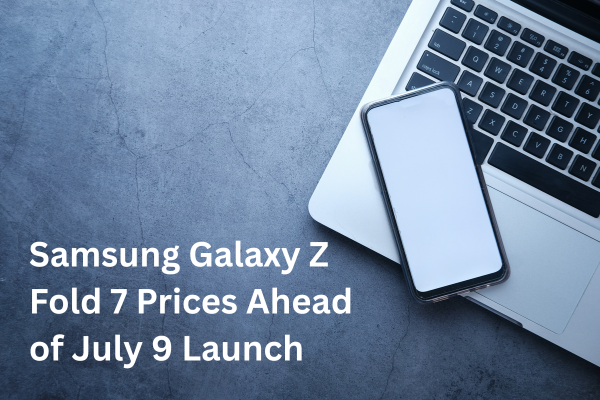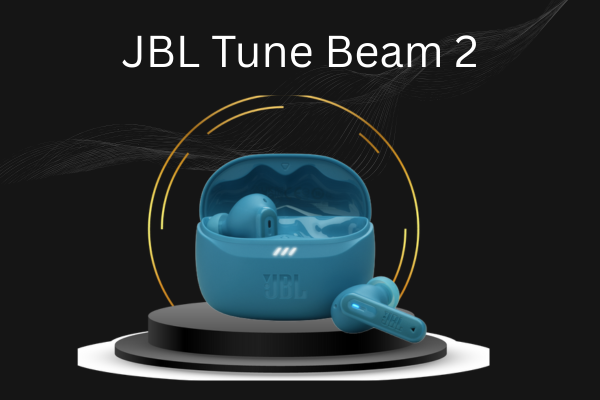The highly anticipated iPhone 17 launch is expected this September, introducing a refreshed lineup including the iPhone 17 Air, standard iPhone 17, iPhone 17 Pro, and iPhone 17 Pro Max. With rumors of groundbreaking design upgrades, performance boosts, and possible GPT-5 integration powering Apple Intelligence, this release could redefine how we use our smartphones.
What We Know So Far
Apple’s iPhone 17 launch is widely expected this September 2025, sticking to Apple’s traditional fall release schedule. Leaks from German mobile carriers and Bloomberg insider Mark Gurman point to Tuesday, September 9, as the likely date for the official announcement, with pre-orders and shipments following later in the month.
Timeline Overview (to August 2025)

- Early Rumors (Mid-2025): Speculation intensifies about Apple refreshing its iPhone lineup, including a new ultra-thin model labeled “Air”. The iPhone 17 Air is tipped to be Apple’s thinnest iPhone yet, measuring around 5.5mm.
- Design and Models Leak: Reports confirm the Quad lineup: iPhone 17, iPhone 17 Air, iPhone 17 Pro, and iPhone 17 Pro Max, with the “Plus” variant being dropped.
- Display and Features Rumors: All models are expected to feature 120 Hz ProMotion displays—a first for non-Pro models too—and possibly LTPO panels for advanced energy efficiency and always-on capabilities.
Confirmed vs. Rumored
- Confirmed or Highly Likely:
- Launch window: September 2025, likely announcement on September 9.
- Lineup: Base, Air, Pro, Pro Max — no Plus model exists.
- Display upgrades: 120 Hz for all models.
- Rumored or Less Certain:
- Ultra-thin iPhone 17 Air: Thickness estimates vary (5–6 mm), but 5.5 mm is common in mock-ups.
- Design changes: Horizontal camera bar on Pro models and simplified rear design on Air.
- Battery, RAM, chip upgrades: Pro models may get A19 Pro, up to 12 GB RAM, and enhanced selfie cameras; Air may use A19 chip and feature modest battery to maintain slim profile.
Quick Bullets: Expected Models & Headline Changes
- iPhone 17 Air – Ultra-thin (~5.5 mm), 6.6-inch display, single-lens rear camera, likely replaces “Plus” variant.
- iPhone 17 (Standard) – Larger 6.3-inch display than previous base model, 120 Hz refresh, improved selfie cam.
- iPhone 17 Pro – Same 6.3-inch display with LTPO, new camera module design, A19 Pro chip, up to 12 GB RAM.
- iPhone 17 Pro Max – 6.9-inch screen, triple-lens camera (including telephoto and LiDAR), improved battery, possibly faster charging.
Release Date & Event Details
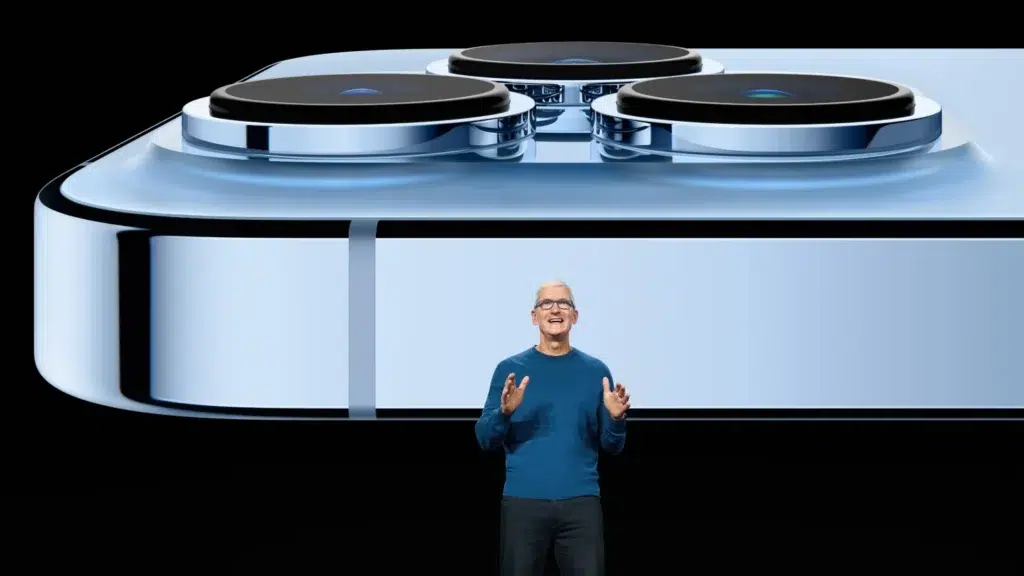
The iPhone 17 launch is expected to follow Apple’s long-standing tradition of hosting its annual keynote in early to mid-September. Multiple industry reports, including those from Tom’s Guide and The Economic Times, point to the first half of September 2025 as the likely window, with several insiders suggesting Tuesday, September 9 as the announcement date.
Following Apple’s usual release pattern, pre-orders are expected to open three days after the event (likely Friday, September 12), with the first units shipping and arriving in stores about a week later, around September 19. This timeline has been consistent for nearly a decade, allowing Apple to maximize hype while ensuring a smooth global rollout.
The keynote will not only spotlight the iPhone 17 launch lineup — including the Air, standard, Pro, and Pro Max models — but is also rumored to feature updates across Apple’s product ecosystem.
Expected unveilings include the Apple Watch Series 11 with new health sensors, refreshed AirPods potentially featuring improved noise cancellation and spatial audio, and possibly an upgraded HomePod with smarter Siri integration.
If accurate, this event could serve as one of Apple’s most significant in years, as it blends major hardware updates with potentially groundbreaking AI advancements, including rumored GPT-5 integration within Apple Intelligence for iOS 26. All signs point to a packed September for Apple enthusiasts and tech followers worldwide.
Models & Pricing Expectations

The iPhone 17 launch will reportedly bring four distinct models, marking a strategic shift in Apple’s lineup. The long-running “Plus” variant is expected to be retired and replaced by the iPhone 17 Air — a sleek, ultra-thin model that prioritizes portability and design appeal. Alongside it, Apple will introduce the standard iPhone 17, the iPhone 17 Pro, and the iPhone 17 Pro Max, each targeting different user needs.
- iPhone 17 Air: Designed for style-conscious users, the Air is rumored to measure just 5.5 mm thick with a 6.6-inch display. While it may sacrifice some battery capacity to achieve its slim form, it’s expected to offer the A19 chip, high-quality display, and a more minimal rear camera setup.
- iPhone 17 (Standard): The all-rounder of the series, likely featuring a 6.3-inch display, dual-camera system, and ProMotion 120 Hz refresh rate. Perfect for most users wanting flagship performance without premium pricing.
- iPhone 17 Pro: A performance powerhouse with the A19 Pro chip, up to 12 GB RAM, LTPO display technology, and an upgraded triple-lens camera system.
- iPhone 17 Pro Max: The largest and most feature-packed, with a 6.9-inch display, periscope telephoto camera, and the best battery life in the lineup.
Expected pricing will likely mirror the iPhone 16 series with slight adjustments:
- iPhone 17 Air: ₹97,132 – ₹107,792
- iPhone 17: ₹107,792 – ₹118,582
- iPhone 17 Pro: ₹129,502 – ₹140,292
- iPhone 17 Pro Max: ₹140,292 – ₹150,982
Buy vs. wait guidance:
- Upgraders from older models (iPhone 13 or earlier): The iPhone 17 launch offers significant performance and camera gains — worth upgrading.
- Camera-first users: The Pro Max will likely justify its premium with superior zoom and low-light performance.
- Budget-conscious buyers: The standard iPhone 17 provides top-tier features without the Pro price tag, but if your current device is recent, waiting for deals post-launch could save money.
Design & Display Changes
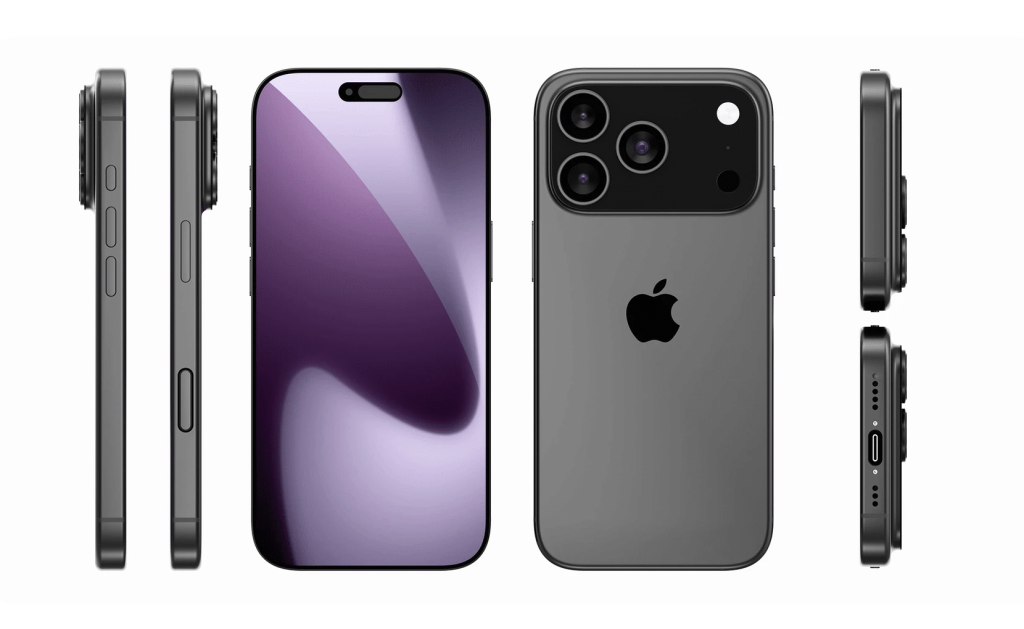
The iPhone 17 launch is shaping up to bring one of the most significant visual overhauls in recent years, with changes aimed at both aesthetics and functionality.
One of the most talked-about leaks involves the new horizontal camera bar for the Pro and Pro Max models. This design, stretching across the back like some Android flagships, is rumored to accommodate larger camera sensors and advanced optics.
While this may give the devices a bolder, more modern appearance, it could also make them slightly bulkier. Case manufacturers will need to redesign cutouts to fit the full-width camera bar, meaning older Pro cases won’t be compatible.
Meanwhile, the iPhone 17 Air is rumored to debut as the thinnest iPhone ever — around 5.5 mm — which is a dramatic departure from the rest of the lineup. Its minimalist single-lens camera system and ultra-slim profile will appeal to style-first buyers, but the reduced thickness could come at the cost of battery life.
On the plus side, its lighter weight and sleek feel may make it the most comfortable iPhone to carry in a pocket or purse. Accessories like cases and screen protectors for the Air will likely focus on preserving its slim design, possibly using ultra-thin protective materials.
The standard iPhone 17 is also set for a refresh, with a slightly larger 6.3-inch display compared to the previous generation. Across the entire lineup, Apple is expected to introduce ProMotion 120 Hz refresh rates — a first for non-Pro models — delivering smoother animations, more responsive touch interactions, and better scrolling.
On the higher end, the Pro and Pro Max models are rumored to feature LTPO (Low-Temperature Polycrystalline Oxide) displays, which can dynamically adjust refresh rates from 1 Hz to 120 Hz. This means better battery efficiency and always-on display functionality without draining power quickly.
Pros of the new design and display updates:
- More modern, distinctive look with the horizontal camera bar.
- Larger displays and higher refresh rates enhance everyday use and media consumption.
- LTPO technology boosts battery life on Pro models.
- Ultra-thin Air offers unmatched portability.
Potential cons:
- Bulkier camera housing on Pro models may not appeal to everyone.
- Ultra-thin Air could compromise battery size.
- Case and accessory compatibility issues for redesigned camera setups.
With these design and display changes, the iPhone 17 launch is expected to blend style, performance, and user experience in a way that could redefine the iPhone lineup’s visual identity.
Cameras & Imaging

The iPhone 17 launch is set to bring some of the biggest camera improvements Apple has introduced in years, particularly for the Pro and Pro Max models. According to multiple leaks, Apple is pushing for professional-grade photography and videography features, aimed at both enthusiasts and content creators.
The headline upgrade is the rumored 48MP telephoto lens on the Pro Max, paired with a periscope zoom system capable of up to 6× optical zoom. This marks a significant jump from the iPhone 16 Pro Max’s 5× zoom, offering clearer detail for distant subjects like wildlife or stadium events.
The Pro and Pro Max are also expected to feature enhanced LiDAR scanners, improving autofocus speed and depth mapping for both photography and augmented reality applications.
The standard iPhone 17 and the ultra-thin iPhone 17 Air are expected to stick with dual-camera systems but benefit from larger sensors and improved image processing. Even without the telephoto hardware, they should deliver better low-light shots and sharper everyday photos thanks to advancements in Apple’s computational photography pipeline.
Real-world use cases:
- Portrait Photography: The enhanced LiDAR and larger sensors will allow for more accurate edge detection, producing sharper subject isolation and natural background blur — ideal for professional-looking portraits without DSLR gear.
- Low-Light Shooting: With upgraded Night Mode and larger sensor pixels, the iPhone 17 series should outperform the iPhone 16 in dimly lit environments, reducing noise and improving color accuracy for shots like evening cityscapes or candlelit dinners.
- Optical Zoom Performance: The Pro Max’s periscope lens will let users capture faraway subjects — like a concert stage from the back rows — with exceptional clarity, a clear advantage over the iPhone 16’s more limited zoom.
When comparing iPhone 17 vs iPhone 16, expect noticeably cleaner low-light photos, more stable video thanks to improved sensor-shift stabilization, and richer detail when zooming. While casual photographers may be satisfied with the standard iPhone 17, those who rely heavily on zoom and pro-level imaging will find the Pro Max a substantial leap forward.
In short, the iPhone 17 launch is poised to put Apple back in serious competition with the best camera phones of 2025, combining hardware advances with smarter software processing.
Performance: A19, Modem, RAM, Battery
The iPhone 17 launch is expected to deliver notable performance upgrades across the lineup, driven by Apple’s continued focus on chip innovation and energy efficiency.
At the heart of the new devices will likely be the A19 chip for the standard iPhone 17 and iPhone 17 Air, and the more powerful A19 Pro chip for the Pro and Pro Max models. Built on a refined 3nm process, these chips should offer faster CPU and GPU performance, improved machine learning capabilities, and better power efficiency compared to the A18 series.
One of the most anticipated changes is the rumored introduction of an Apple-designed 5G modem. By moving away from third-party suppliers, Apple could improve network performance, reduce latency, and optimize power consumption for longer battery life. This in-house approach also means tighter integration with the A19 architecture, potentially boosting speeds for both 5G and Wi-Fi 7 connections.
RAM upgrades are another highlight, with reports suggesting that the Pro models may feature up to 12GB of RAM, up from 8GB in the iPhone 16 Pro series. This would significantly benefit multitasking, gaming, and AI-powered features like the rumored GPT-5 integration in Apple Intelligence.
Battery life improvements are expected, especially for the iPhone 17 Pro Max, which could see a larger battery to complement its expansive 6.9-inch display. Apple may also introduce faster wired charging — possibly up to 35W — reducing charge times noticeably compared to the current 27W standard.
These upgrades mean that for power users, the iPhone 17 launch could offer a tangible jump in speed, connectivity, and endurance. Whether you’re streaming, gaming, editing videos, or using advanced AI features, the A19 platform and accompanying hardware improvements aim to make the iPhone 17 series one of the fastest and most efficient smartphones on the market in 2025.
Software: iOS 26 & GPT-5 / Apple Intelligence
The iPhone 17 launch is expected to coincide with one of Apple’s most ambitious software leaps in years — iOS 26, featuring the debut of “Apple Intelligence.” This upgraded AI framework is designed to make iPhones more context-aware, responsive, and capable across everyday tasks, with reports suggesting deep integration of OpenAI’s GPT-5 for certain advanced functions.
Apple Intelligence & GPT-5 Integration
Apple Intelligence will expand the iPhone’s ability to understand natural language, process requests in context, and deliver personalized results without constant micromanagement from the user. While Apple has historically focused on on-device AI for speed and privacy, the addition of GPT-5 indicates a hybrid approach: critical tasks processed locally, and advanced generative capabilities handled securely in the cloud.
Siri Enhancements
Siri will reportedly receive its most significant upgrade since launch. With GPT-5 powering parts of the system, Siri could handle multi-step queries, remember context across conversations, and offer more natural, human-like responses. For example, instead of asking “What’s the weather in New York?” and then separately, “What about Paris?” you could simply say, “And Paris?” — and Siri would understand the connection.
Practical Use Cases
- Writing Assistants: Drafting emails, blog posts, or social captions with GPT-5’s advanced text generation, tailored to tone and style preferences.
- Expanded Comprehension: Siri could follow long, nuanced instructions without losing track, ideal for planning trips, managing projects, or scheduling.
- On-Device Summarization: Instantly condensing long articles, meeting transcripts, or documents into key bullet points.
- Smarter Search: Combining Spotlight and GPT-5 for semantic search that understands intent, not just keywords.
- Intelligent Photo Captions: Automatically generating rich, descriptive captions for photos based on image content and context.
Privacy & Architecture
Apple is expected to emphasize privacy by keeping most AI tasks on-device using the A19 chip’s Neural Engine. However, GPT-5–powered features may require cloud processing due to their complexity. Apple will likely route this through secure, anonymized servers, preventing personal identifiers from being stored.
Feature Tiers & Availability
Not all Apple Intelligence capabilities may launch immediately with the iPhone 17. Reports suggest a phased rollout through 2025, with some GPT-5–powered features potentially limited to Pro models or requiring an Apple One subscription upgrade to offset licensing costs.
This tiered approach could also apply to cloud-dependent features, giving users the choice between faster, fully local AI and more powerful, cloud-enhanced capabilities.
In essence, the iPhone 17 launch will mark the point where Siri shifts from being a reactive assistant to a proactive, contextually aware partner — with GPT-5 acting as the brain behind the scenes for the most complex requests. If Apple delivers on its promises, iOS 26 with Apple Intelligence could redefine how users interact with their iPhones in daily life.
Connectivity, Sensors & Extras
The iPhone 17 launch is expected to bring notable advancements in connectivity and onboard sensors, making the device more versatile and future-proof. One of the most discussed upgrades is the rumored adoption of Wi-Fi 7, promising multi-gigabit speeds, lower latency, and better stability in congested networks. For users in smart home or gaming ecosystems, this could mean seamless streaming, faster downloads, and smoother device syncing.
Another much-anticipated feature is reverse wireless charging, allowing the iPhone 17 to wirelessly power accessories like AirPods, Apple Watch, or even other iPhones. This capability, already seen in some competitors, would enhance on-the-go convenience for Apple users.
In the biometrics department, leaks suggest an improved Face ID system with faster recognition and better performance in low-light scenarios. Some reports even hint at additional environmental sensors — possibly for air quality monitoring or detecting hazardous gases — aligning with Apple’s growing focus on health and wellness technology.
Combined, these upgrades would not only make the iPhone 17 launch a leap in processing and AI but also a step forward in practical, real-world usability, bridging the gap between a high-performance smartphone and a truly intelligent personal device.
How the GPT-5 Integration Affects Buying Decisions
The rumored GPT-5 integration in Apple Intelligence could be one of the most influential factors driving upgrades during the iPhone 17 launch. If Apple bundles advanced GPT-5 capabilities — such as context-aware Siri responses, on-device content summarization, and creative writing assistance — directly into iOS 26, it could be a game-changer for productivity-focused and tech-savvy users.
However, there’s still uncertainty around whether all GPT-5 features will be included for free or locked behind an Apple One+ or Apple Intelligence subscription. Basic AI improvements might be free for all iPhone 17 users, but more advanced, cloud-reliant features (like large-context creative tasks or complex research queries) could be paywalled.
For heavy multitaskers, students, professionals, and content creators, upgrading could unlock a noticeable boost in day-to-day efficiency — especially when combined with the A19 chip’s AI acceleration. Meanwhile, casual users who primarily text, browse, and stream may find GPT-5 intriguing but not essential enough to justify upgrading from the iPhone 16 or similar models.
Ultimately, if GPT-5 delivers on its promise, it won’t just be a selling point — it could redefine how the iPhone is used, shifting it from a reactive assistant to an active, intelligent collaborator.
iPhone 17 vs Competitors
With the iPhone 17 launch set for September, Apple is entering a competitive arena dominated by Samsung’s Galaxy S25/S26 lineup and Google’s latest Pixel models. Each competitor brings unique strengths, but Apple’s rumored design and AI upgrades could set the iPhone 17 apart.
From a design perspective, the ultra-thin iPhone 17 Air and the bold horizontal camera bar on Pro models contrast Samsung’s sleeker curved designs and Google’s distinct visor-style camera housing. Apple’s premium build quality, tighter tolerances, and longer support cycle remain unmatched, though Galaxy devices often lead in display tech and battery customization options.
In camera performance, the iPhone 17 Pro Max’s rumored 48MP telephoto and periscope lens could finally close the gap with Samsung’s zoom capabilities, while Apple’s color science and computational photography still appeal to creative professionals.
Pixels remain leaders in AI-driven image enhancements, but GPT-5-powered Apple Intelligence could give iPhone a competitive edge in photo organization, captioning, and on-device editing suggestions.
The ecosystem remains Apple’s biggest strength — seamless integration with Macs, iPads, Apple Watch, and AirPods still outpaces Android rivals. However, Samsung’s foldables and Google’s faster AI feature rollouts highlight Apple’s slower adoption of experimental tech.
In 2025, the decision may hinge on AI integration. If Apple delivers on GPT-5-powered Apple Intelligence, the iPhone 17 launch could represent not just a hardware upgrade, but a smarter, more personal smartphone experience than anything its competitors currently offer.
Pre-Order & Launch Checklist
With the iPhone 17 launch expected in September, preparation is key to securing your preferred model. Here’s a quick checklist to help you get ready:
- Carrier Deals – Major carriers often offer aggressive trade-in promotions, especially in the first week after launch. Compare deals early and check fine print for locked contracts or installment plans.
- Trade-In Tips – Clean your old device, ensure it’s fully functional, and back it up before handing it over. Apple’s own trade-in program is convenient, but third-party resellers can sometimes offer more value.
- Storage Recommendations – If you shoot a lot of video (especially ProRes) or plan to use advanced GPT-5 Apple Intelligence features, consider at least 256GB or 512GB storage to avoid constant management.
- Backups & Migration – Use iCloud or Finder (Mac) to create a full backup before switching. With iOS 26, Quick Start transfers are even faster, but a backup ensures nothing is lost.
- Launch Day Strategy – Pre-orders typically open on a Friday, with shipments starting the following week. Set reminders and be ready right at order time — popular colors and Pro Max models tend to sell out first.
Being prepared ensures you can enjoy your iPhone 17 on day one, without last-minute hassles.
FAQs
1. When will the iPhone 17 launch?
The iPhone 17 launch is expected in early-to-mid September 2025, following Apple’s traditional event schedule. Pre-orders should open a few days after the announcement.
2. Will the iPhone 17 get GPT-5?
Yes, reports suggest GPT-5 will power parts of Apple Intelligence in iOS 26, enhancing Siri, writing tools, and on-device AI features.
3. Which iPhone 17 model should I buy?
Choose based on priorities: Air for ultra-thin design, base for affordability, Pro for advanced photography, and Pro Max for top-tier zoom and battery.
4. Will prices go up?
Analysts expect pricing to be similar to the iPhone 16 series, but higher storage and Pro models may see small increases due to new hardware.
5. What are the biggest design changes?
Rumors point to a horizontal camera bar on Pro models, a thinner Air variant, and larger displays for base models.
6. What camera upgrades are expected?
Pro Max may get a periscope telephoto lens, Pro models could feature a 48MP telephoto, and all models may benefit from improved LiDAR.
7. How will Apple Intelligence work?
It’s expected to integrate GPT-5 for enhanced Siri, contextual prompts, summarization, and AI-powered photo captions.
8. What storage size should I get?
If you shoot lots of video or use AI-heavy features, 256GB or more is recommended; casual users can stick with 128GB.
9. Will there be other products at launch?
Yes, likely announcements include Apple Watch Series 11, new AirPods, and possibly updated HomePod models.
10. Should I upgrade from iPhone 16?
If you want AI features, better zoom, or the new design, the iPhone 17 launch is worth considering; otherwise, you can wait for the iPhone 18.
Conclusion & Final Verdict
The iPhone 17 launch is shaping up to be one of Apple’s most significant upgrades in years, thanks to design changes, camera enhancements, and the anticipated GPT-5–powered Apple Intelligence. If you prioritize cutting-edge photography, AI-driven tools, and premium performance, waiting for the iPhone 17 Pro or Pro Max is a smart move.
Those who value portability and a sleek, lightweight form factor should look toward the ultra-thin iPhone 17 Air. For everyone else, factor in trade-in deals, carrier promotions, and whether your current device still meets your needs before upgrading. With the combination of refined hardware and breakthrough AI integration, the iPhone 17 lineup promises to set a new standard in both mobile performance and user experience.
